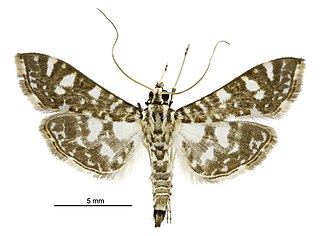Related Research Articles

Yucca is a genus of perennial shrubs and trees in the family Asparagaceae, subfamily Agavoideae. Its 40–50 species are notable for their rosettes of evergreen, tough, sword-shaped leaves and large terminal panicles of white or whitish flowers. They are native to the Americas and the Caribbean in a wide range of habitats, from humid rainforest and wet subtropical ecosystems to the hot and dry (arid) deserts and savanna.

Wisteria is a genus of flowering plants in the legume family, Fabaceae (Leguminosae). The genus includes four species of woody twining vines that are native to China, Japan, Korea, Vietnam, southern Canada, the Eastern United States, and north of Iran. They were later introduced to France, Germany and various other countries in Europe. Some species are popular ornamental plants. The genus name is also used as the English name, and may then be spelt 'wistaria'. In some countries in Western and Central Europe, Wisteria is also known by a variant spelling of the genus in which species were formerly placed, Glycine. Examples include the French glycines, the German Glyzinie, and the Polish glicynia.
The Prodoxidae are a family of moths, generally small in size and nondescript in appearance. They include species of moderate pest status, such as the currant shoot borer, and others of considerable ecological and evolutionary interest, such as various species of "yucca moths".

Beauveria bassiana is a fungus that grows naturally in soils throughout the world and acts as a parasite on various arthropod species, causing white muscardine disease; it thus belongs to the group of entomopathogenic fungi. It is used as a biological insecticide to control a number of pests, including termites, thrips, whiteflies, aphids and various beetles. Its use in the control of bedbugs and malaria-transmitting mosquitos is under investigation.

A bolas spider is a member of the orb-weaver spider that, instead of spinning a typical orb web, hunts by using one or more sticky "capture blobs" on the end of a silk line, known as a "bolas". By swinging the bolas at flying male moths or moth flies nearby, the spider may snag its prey rather like a fisherman snagging a fish on a hook. Because of this, they are also called angling or fishing spiders. The prey is lured to the spider by the production of up to three sex pheromone-analogues.

Gracillariidae is an important family of insects in the order Lepidoptera and the principal family of leaf miners that includes several economic, horticultural or recently invasive pest species such as the horse-chestnut leaf miner, Cameraria ohridella.

Chrysiridia rhipheus, the Madagascan sunset moth, is a species of day-flying moth of the family Uraniidae. It is considered one of the most impressive and appealing-looking lepidopterans. Famous worldwide, it is featured in most coffee table books on Lepidoptera and is much sought after by collectors, though many older sources misspell the species name as "ripheus". The colours originate from optical interference in the iridescent parts of the wings, while the black parts are pigmented. Adults have a wingspan of 7–9 cm (2.8–3.5 in).

Galacticidae is a recently recognised and enigmatic family of insects in the lepidopteran order. These moderate sized moths are 8–17 mm in wingspan and have previously been embedded within several lepidopteran superfamilies, but Galacticidae is currently placed in its own superfamily at the base of the natural group Apoditrysia.

The Batrachedridae are a small family of tiny moths. These are small, slender moths which rest with their wings wrapped tightly around their bodies.

Scythris is a genus of gelechioid moths. It is the type genus of the flower moth family, which is sometimes included as a subfamily in the Xyloryctidae, or together with these merged into the Oecophoridae. The genus was erected by Jacob Hübner in 1825.

Glyphodes onychinalis is a moth of the family Crambidae. It is native to the Afro-Asian Region, including India, Sri Lanka, Hong Kong, Thailand, Indonesia, Japan, Australia and New Zealand, and has been recorded in California since 2000.
Coleophora milvipennis is a moth of the family Coleophoridae. It is found in all of Europe, east to Japan (Hokkaido).

The Phycitinae are a subfamily of snout moths. Even though the Pyralidae subfamilies are all quite diverse, Phycitinae stand out even by standards of their family: with over 600 genera considered valid and more than 4000 species placed here at present, they unite up more than three-quarters of living snout moth diversity. Together with the closely related Epipaschiinae, they are apparently the most advanced lineage of snout moths.

Homona coffearia, the tea tortrix or camellia tortrix, is a moth of the family Tortricidae. The species was first described by Nietner in 1861. It is widely distributed in the Oriental region.
Etielloides bipartitellus is a species of snout moth in the genus Etielloides. It was described by John Henry Leech in 1889, and is known from China, Japan and Korea.
Etielloides kogii is a species of snout moth in the genus Etielloides. It was described by Hiroshi Yamanaka in 1998 and is known from China and Japan.
Etielloides longipalpus is a species of snout moth in the genus Etielloides. It was described by Ying-Dang Ren and Hou-Hun Li in 2006 and is known from China.
Etielloides sejunctella is a species of snout moth in the genus Etielloides. It was described by Hugo Theodor Christoph in 1881 and is known from China, Japan and the Russian Far East.
Eulophopalpia is a genus of snout moths. It was described by Hiroshi Inoue in 1982, and is known from Japan. It contains the species E. pauperalis.

Eurhodope cirrigerella is a species of snout moth in the genus Eurhodope. It was described by Johann Leopold Theodor Friedrich Zincken in 1818, and is known from most of Europe.
References
- ↑ "GlobIZ search". Global Information System on Pyraloidea. Retrieved 2011-09-29.
- ↑ "Japanese Moths". Jpmoth.org. Retrieved 2012-01-17.
- ↑ "Descriptions of one new Genus and one new Species, with four unrecorded species of Phycitinae from Japan" (PDF). Retrieved 2012-01-17.